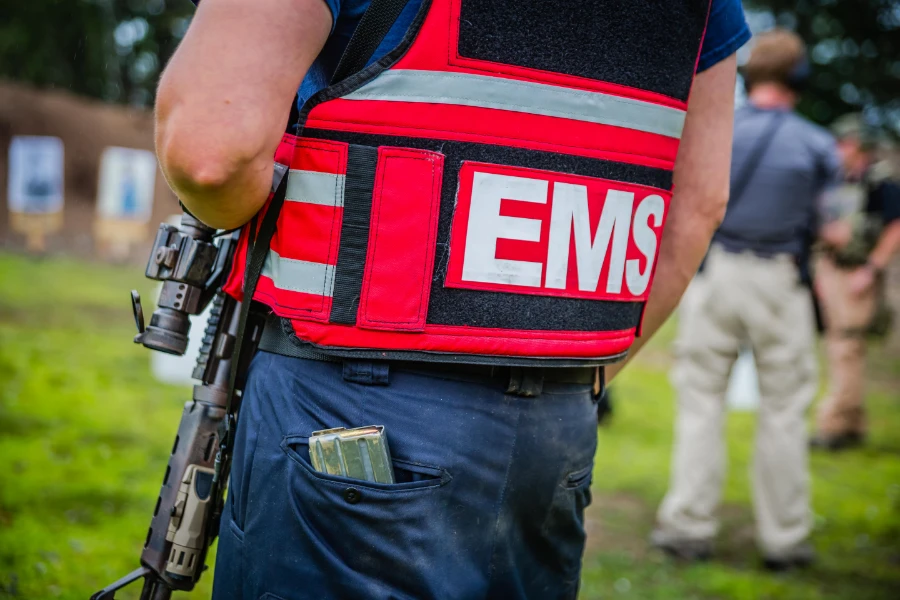South Florida, with its unique blend of urban environments and natural terrains, poses distinct challenges for emergency response teams. Tactical paramedics in this region have to be prepared for a wide array of scenarios, from urban crises to emergencies in coastal or swampy areas. For those aiming to join this elite group of professionals, here’s a roadmap detailing the learning curve:
- Basic Requirements:
- Age: Typically, candidates must be at least 18 years old.
- Driver’s License: A valid state driver’s license is often a prerequisite.
- Criminal Background: Most agencies will require a clean criminal background.
- Education and Degrees:
- High School Diploma or GED: This is the foundational educational requirement.
- EMT Certification: Before advancing to paramedic training, you typically start with an Emergency Medical Technician (EMT) certification. This involves coursework and clinical experience.
- Paramedic Certification: After the EMT, one can pursue a more intensive paramedic certification. In South Florida, various institutions offer such courses, which delve deeper into advanced medical procedures and pharmacology.
- Physical Requirements:
- Fitness: Given the demanding nature of the job, tactical paramedics need to be in top physical condition. This often includes cardiovascular endurance, strength, flexibility, and agility.
- Medical Examination: A thorough medical exam ensures that the candidate doesn’t have any health conditions that might impede their duties.
- Specialized Tactical Training:
- SWAT or Tactical Team Training: Becoming a tactical paramedic isn’t just about medical expertise. It also requires specialized training with SWAT or other tactical teams to understand the nuances of operating in high-risk environments.
- Water Rescue and Wilderness Courses: Especially relevant for South Florida, these courses equip paramedics with skills to handle emergencies in aquatic or wild terrains.
- Additional Qualifications and Courses:
- Advanced Life Support (ALS) Certification: While some may have this included in their paramedic certification, others might need to take additional courses.
- Tactical Medical Operator Course: Some institutions or agencies offer specialized courses focused explicitly on the tactical aspect of the paramedic profession.
- Continued Education:
- Stay Updated: Medicine and tactics evolve. Regular courses, seminars, and workshops ensure tactical paramedics remain updated with the latest in both fields.
After successfully navigating this extensive learning curve, tactical paramedics in South Florida are then poised to handle the myriad challenges thrown their way. These professionals, by virtue of their training and dedication, become invaluable assets to law enforcement and the broader community.

With this foundational knowledge, it’s time to delve deeper into the key responsibilities of a Tactical Paramedic.
Tactical Medical Support
In the realm of tactical operations, medical support is an immediate necessity. Tactical paramedics are trained specialists capable of offering on-the-spot medical care, even amidst potential chaos. Their primary role revolves around treating injured law enforcement officers, suspects, and civilians on the scene. Additionally, they’re equipped with the knowledge to differentiate among various injuries, understanding which need rapid attention. Their prompt response can often mean the difference between life and death, thus their interventions are indispensable. In high-risk situations, where standard medical personnel might be out of their depth, tactical paramedics are the go-to experts.
Operational Integration
Being in sync with law enforcement units, especially SWAT teams, is essential for tactical paramedics. Their function isn’t merely as an appendage but as a seamlessly integrated component of these teams. By understanding and mirroring law enforcement tactics, they ensure that medical assistance does not interfere but complements the mission. Through regular collaboration, they create an environment where medical backup is not just an afterthought but an intrinsic part of the operation.
High-Risk Environments
Working in high-risk environments isn’t for the faint of heart. Tactical paramedics often find themselves in the midst of active shooter incidents, volatile hostage situations, and high-stakes warrant services. Every situation demands a calm demeanor, resilience, and an unerring focus on saving lives. These professionals are trained to navigate these intense scenarios with a clear head, making sure that safety and medical aid remain paramount.
Equipment Management
Equipment readiness translates to life-saving efficiency. Tactical paramedics are responsible for meticulously maintaining an array of specialized medical equipment. From trauma kits packed with essential tools to bleeding control supplies and advanced airway management tools, everything must be in prime condition. Regular checks, updates, and quick access setups are fundamental tasks ensuring that, when the time comes, the equipment performs flawlessly.
Continuous Training
Medicine and tactics are fields that evolve continually. For a tactical paramedic, ongoing training is not just a requirement but a necessity. They immerse themselves in the latest medical techniques, treatments, and protocols to stay at the forefront of their profession. This dedication extends to cross-training with law enforcement, fostering a deeper understanding and symbiotic relationship between the two critical roles.
Casualty Extraction
Beyond the initial treatment, tactical paramedics face the challenge of casualty extraction. In many high-risk situations, the injured individual might be in a location that’s hard to access or riddled with threats. Here, the paramedic must not only provide medical aid but also ensure the casualty’s safe removal from the danger zone. This task demands a blend of medical expertise and tactical understanding.
Safety and Threat Assessment
Being situationally aware is a cornerstone of the tactical paramedic’s role. Continuously gauging the safety of the environment, they need to be quick to spot potential threats. Their assessments dictate their medical interventions, ensuring both their safety and that of the patient. By staying alert and adaptable, they effectively minimize risks.
Liaison with Traditional EMS
Marrying the world of tactical operations with traditional emergency medical services (EMS) is a unique responsibility. Tactical paramedics serve as this bridge. They facilitate smooth patient handoffs, ensure effective communication channels, and relay crucial details about patient conditions and the evolving situation to EMS teams.
In summary, the role of a Tactical Paramedic is both challenging and rewarding. Their multifaceted responsibilities play a pivotal part in ensuring safety and medical care in high-risk environments. For those keen on this dynamic career, exploring how to become a Tactical Paramedic is the first step towards making a difference.

Jeromy VanderMeulen is a seasoned fire service leader with over two decades of experience in emergency response, training, and public safety management. He currently serves as Battalion Chief at the Lehigh Acres Fire Control & Rescue District and is CEO of the Ricky Rescue Training Academy, a premier provider of online and blended EMT and firefighter certification programs in Florida.
Jeromy holds multiple degrees from Edison State College and the Community College of the Air Force, and is pursuing his MBA at Barry University. He maintains top-tier certifications, including Fire Officer IV, Fire Instructor III, and Fire Inspector II, and has served as a subject matter expert for a court case. He is a member or the Florida Fire Chiefs Association.
Jeromy also contributes to state-level fire safety regulation and serves on several hiring and promotional boards.

